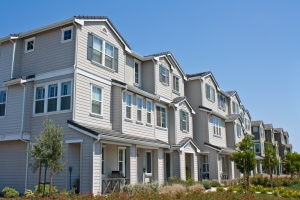
Trying to decide what kind of siding to get on the exterior of your home? There are a lot of options to choose from, and the decision can be overwhelming. Even once you’ve decided what type of material to use, such as vinyl, stucco, or wood, you still have a world of options to choose from. If you’ve chosen to use wooden siding, you’ve probably heard of the term “lap siding” and are wondering what in the world it is.
What is lap siding?
Originally, lap siding was more commonly known as wood siding. However, lap siding is now available in a variety of materials, including vinyl, fiber cement, and engineered wood as well as the traditional wood siding.
Lap siding is a flat siding option that is composed of long boards that overlap each other, which is where the name “lap siding” comes from. This type of design is also often called clapboard, even though lap siding is made up of larger boards than clapboard is.
Lap siding is a beautiful and aesthetically pleasing siding option, that you’ve probably seen all over new and remodeled homes. You can also use lap siding in conjunction with any other type of siding and building material. Lap siding does a wonderful job of accentuating whatever other types of siding you choose, so it’s perfect to use alongside stucco, stone, and brick on your home.
The benefits of lap siding
There are plenty of other great reasons to choose lap siding for the exterior of your home, besides just the aesthetic appeal. It’s a perfect design choice for anyone who is looking to increase their curb appeal, because lap siding is:
- Durable
- Sustainable
- Resists rotting
- Almost maintenance free
- Usually comes with a 20-50 year warranty(this varies depending on the specific product you choose)
- Available in a variety of colors
Lap siding options
As we mentioned earlier, you can select your lap siding in traditional wood, vinyl, fiberglass cement, or engineered wood. One of the great reasons to use lap siding is that, no matter which material you choose, if it needs to be repaired, you only have to remove the one damaged plank. This makes the maintenance affordable and easy to do. When it is installed, each new piece is wedged underneath the piece above it. This forms a very protective barrier between your home and all of the elements.
- When Do I Need to Replace My Rain Gutters? - May 20, 2024
- Getting Your Rain Gutters Ready For Spring - April 22, 2024
- Why James Hardie Siding Is Perfect For Your Home - March 26, 2024



